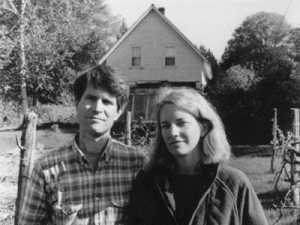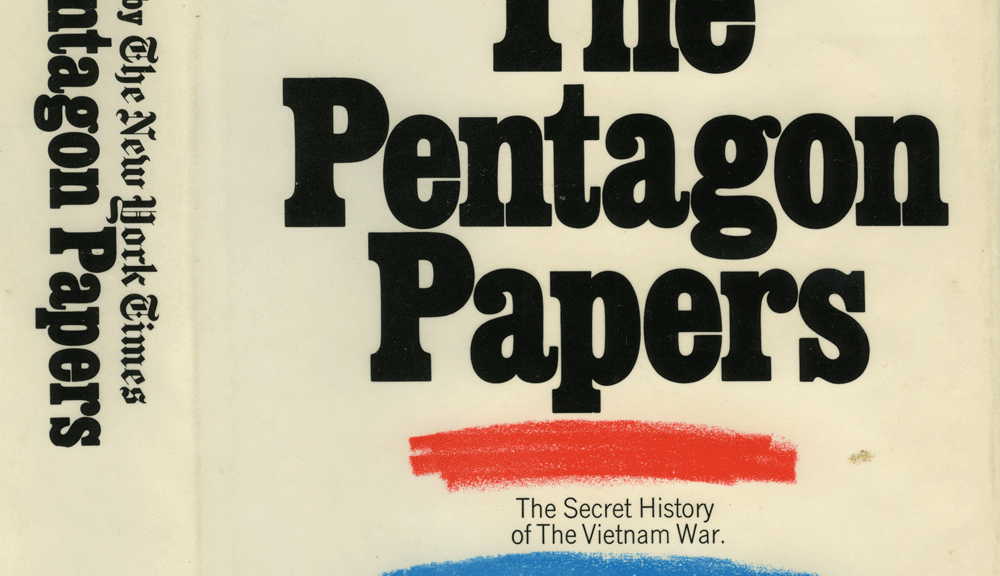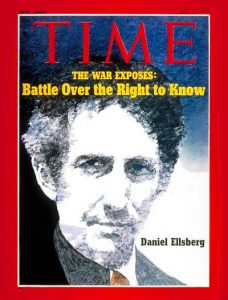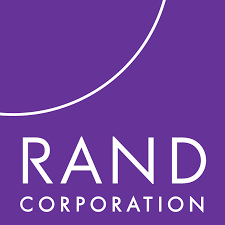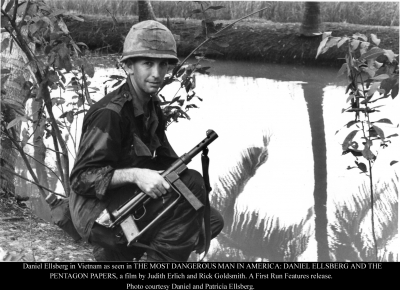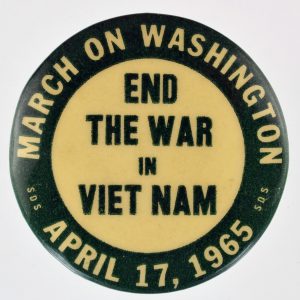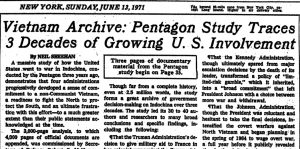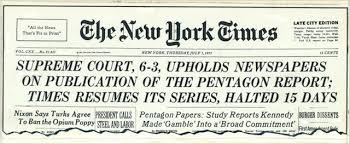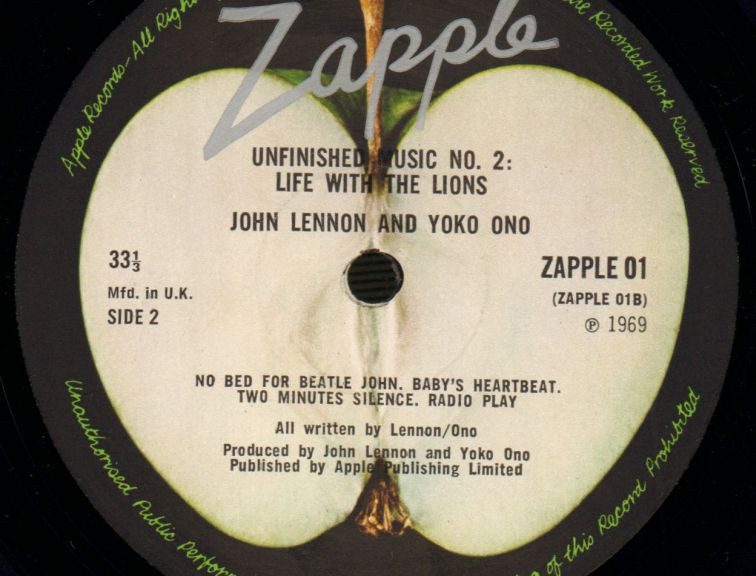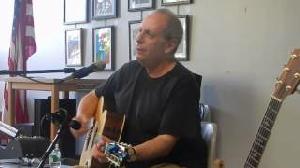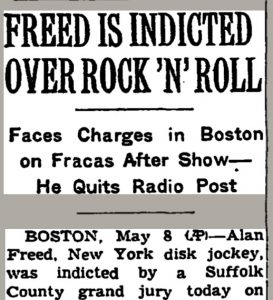May 10 Peace Love Art Activism
BLACK HISTORY
Negro Act of 1740
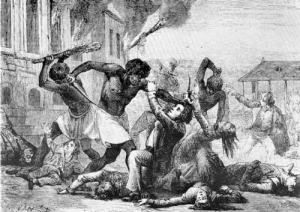
May 10, 1740: the South Carolina Assembly enacted the “Bill for the better ordering and governing of Negroes and other slaves in this province,” also known as the Negro Act of 1740. The law prohibited slaves from growing their own food, learning to read, moving freely, assembling in groups, or earning money. It authorized slave owners to whip and kill rebellious slaves.
South Carolina implemented this act after an unsuccessful 1739 slave revolt called the Stono Rebellion, in which approximately fifty slaves killed between twenty and twenty-five whites. In addition to establishing a racial caste and property system in the colony, the assembly sought to prevent any additional slave rebellions by including provisions that mandated a ratio of one white person for every ten slaves on a plantation. The Negro Act rendered slaves human chattel and revoked all civil rights for persons of color.
The law served as a model for future states such as Georgia, which authorized slavery within its borders in 1750 and enacted its own slave code five years later. In 1865, the passage of the Thirteenth Amendment legally abolished slavery in the United States but the effects of the Negro Act of 1740 and similar laws were felt throughout the country for more than two centuries. (from EJI article)
Slave Revolts in NYC
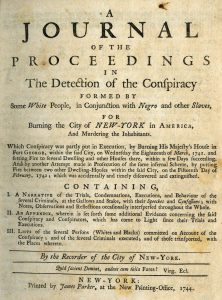
March and April 1741: series of suspicious fires and reports of slave conspiracy led to general hysteria in New York City, Thirty-one slaves, five whites executed. (Historical Society of NY Courts article)(see January 6, 1773)
Charleston riot
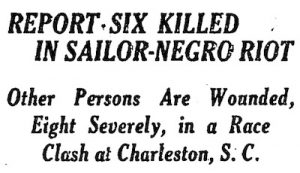
May 10 – 11, 1919: in the words of the follow-up Navy investigation, “a disturbance which assumed the nature and proportions of a race riot took place in the city of Charleston, South Carolina, on the night of May 10-11, 1919, between the hours of 7:00 p.m., and 3:00 a.m.” The incident started when an unidentified black man allegedly pushed Roscoe Coleman, U.S. Navy, off the sidewalk. A group of sailors and civilians chased the man, who took refuge in a house on St. Philip Street. A fight then took place there, with both sides throwing bricks, bottles, and stones. There followed “wild rumors and stories of a sailor having been shot by a negro” and general rioting.
During the riot, both sides used firearms. Eighteen black men were seriously injured, as were five white men. Three black men, William Brown, Isaac Doctor, and James Talbot, died of gunshot wounds.
The Navy report sets out the final analysis. The riot was “of spontaneous origin and was precipitated by the actions of certain negroes, sailors, and at least one white civilian. . . [A]n active part in this initial disturbance was taken by the following men: G.W. Biggs, Coppersmith, second class, U.S. Navy, USS Hartford; Roscoe Coleman, Fireman third class, U.S. Navy, Machinist Mates School; Robert Morton, Fireman, third class, U.S. Navy, Machinist Mates School, and Alexander Lanneau, white civilian, a resident of Charleston, South Carolina, who . . . was responsible for stirring up strife and inciting others to violence against the negroes. . . . Ralph Stone, Fireman, third class, U.S. Navy, Machinist Mates School, was one of the leaders and inciters of a mob. . . . [T]he wound in the right chest of Isaac Doctor . . . was inflicted by a 22-caliber bullet fired from a rifle in the hands of either Jacob Cohen, Fireman, third class, U.S. Navy, or George T. Holliday, Fireman, third class, U.S. Navy, who are jointly responsible for his death. . . [A]ll property damage, . . except in the case of Harry Police’s poolroom where damage was caused by negroes, was caused by the unlawful actions of mobs, which in all cases were composed principally of sailors. . . [A]ll injuries to negro men. . . were inflicted by mobs composed principally of sailors.”
The Charleston rioting demonstrated a typical characteristic of white mob violence in the United States. Despite a thorough, dispassionate investigation, despite evidence and the naming of culpable individuals, and despite it being well within the purview of the military authorities to do so, very little punishment was exacted. Cohen and Holliday, although the Navy report held them responsible for the death of Isaac Doctor, were eventually sentenced for their involvement in the riot to only a year in Parris Island, South Carolina. (BH, see June 23; RR, see July 19)
Nashville Student Movement
Birmingham desegregation agreement
May 10, 1963: the SCLC and the Senior Citizens Committee (Birmingham business group) agreed on the desegregation of lunch counters, restrooms, fitting rooms and drinking fountains, the upgrading and hiring of blacks, cooperation with SCLC legal representatives in releasing all jailed persons, and the establishment of communication between black and whites through the Senior Citizens Committee.
In the wake of the Children’s Crusade, the Birmingham Board of Education announced that all children who participated in the march would be suspended or expelled from school. While the local federal district court upheld the ruling, the United States Court of Appeals for the Fifth Circuit reversed the decision. (Black Past article)
“Bombingham”
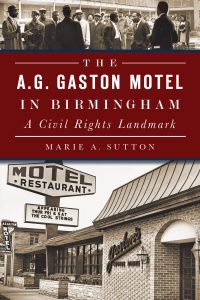
May 10, 1963: Birmingham, Alabama, acquired the nickname “Bombingham” in the 1960s because of the many bombs directed at anyone involved in the civil rights movement. In the spring of 1963, Birmingham was the scene of massive civil rights demonstrations that were among the most important events of the civil rights era.
On this day, the A. G. Gaston Motel, where many civil rights leaders stayed during the protracted civil rights protests stayed, was bombed. (Saving Places dot org article) (see May 11)
Killers applauded
May 10, 1965: the three accused killers of Viola Liuzzo were part of a Ku Klux Klan parade. Collie Wikkins, free on bond after the mistrial, carried a Confederate flag. After the parade, the Imperial Wizard of the United Klans of America, Robert Shelton, asked the three men to stand. They received a standing ovation. (next BH, see May 13; see Liuzzo for expanded story)
Vernon Dahmer
May 10, 1969: an all-white federal court jury acquitted three of 10 KKK members of civil rights conspiracy charges in the death of Vernon Dahmer (see January 10, 1966) and was unable to agree on verdicts for the other seven. (Clarion Ledger article) (BH, see Aug 16; Dahmaer, see May 28, 1998)
Rodney King
May 10, 1991: a grand jury refused to indict 17 officers who stood by at the King beating and did nothing. (BH, see June 5; King, see Nov 26)
Nelson Mandela
May 10, 1994: Mandela sworn in as president of South Africa, making a speech of shared patriotism that summons South Africans’ communal exhilaration in their land and their relief at being freed from the world’s disapproval. (text of speech via Black Past) (see June 24, 1995)
Jimmie Lee Jackson
May 10, 2007: 42 years after the homicide, an Alabama grand jury indicted former state trooper James Bonard Fowler for the February 18, 1965 murder of Jimmie Lee Jackson. (BH, see June 14; see Jackson for expanded story)
Stop and Frisk Policy
May 10, 2012: Mayor Bloomberg again offered a spirited defense of the NYPD’s stop-and-frisk policy and criticized the NYCLU’s analysis of the data. (see May 13)
BLACK & SHOT and Ahmaud Arbery
May 10, 2020: Georgia Attorney General Chris Carr asked the Department of Justice on Sunday to conduct an investigation into the handling of the Ahmaud Arbery case. [NPR story] (next B & S and AA , see May 11, or see AA for expanded chronology)
May 10 Peace Love Art Activism
Feminism
Elizabeth Cady
May 10, 1840: Elizabeth Cady married Henry Brewster Stanton, omitting the word “obey” from the ceremony. (Albany dot edu article) (see June 12)
American Equal Rights Association
May 10, 1866: American Equal Rights Association held its first meeting. Elizabeth Cady Stanton and Susan B. Anthony are among the founding members. The AERA unites abolitionists, African-American activists, and feminists in pursuit of racial and gender equality. (BH, see July 27; Feminsim, see May 9, 1867)
Matilda Josyln Gage
Woman Suffrage Associations
May 10, 1876: Gage chaired at the Ninth Annual Convention of the National and New York State Woman Suffrage Associations. In her opening address she said that during the past 100 hundred years man had had his share of the advantages of the Declaration of Independence, but woman at the outset of the second century of the Republic stood just where she had in 1776.
History of Woman Suffrage
1876 – 1886: History of Woman Suffrage was produced by Gage, Elizabeth Cady Stanton, Susan B. Anthony, and Ida Husted Harper. Published in six volumes from 1881 to 1922, it is a history of the women’s suffrage movement, primarily in the United States. Its more than 5700 pages are the major source for primary documentation about the women’s suffrage movement from its beginnings through the ratification of the Nineteenth Amendment to the U.S. Constitution, which enfranchised women in the U.S. in 1920. Written from the viewpoint of the wing of the movement led by Stanton and Anthony, its coverage of rival groups and individuals is limited.
The first three volumes, which cover the history of the movement from its beginnings to 1885, were written and edited by Stanton, Anthony and Matilda Joslyn Gage. Volume 1 (1848–1861) appeared in 1881, Volume 2 (1861–1876) in 1882 and Volume 3 (1876–1885) in 1886. Some early chapters first appeared in Gage’s newspaper, The National Citizen and Ballot Box.
Relief from her political liabilities
In 1877: Gage petitioned Congress to grant her “relief from her political liabilities.”
Freethought Convention
In 1878: Gage was a speaker at the Freethought convention in Watkin’s Glen, NY; an arrest under the Comstock Laws occurs there for the sale of a birth control manual. (Feminism, see January 10)
The National Citizen and Ballot Box
From 1878 – 1881: Gage published The National Citizen and Ballot Box, official paper of the NWSA. (Feminism, see February 15, 1879; VR, see March 8, 1884)
Who Planned the Tennessee Campaign of 1862?
In 1880: Gage wrote “Who Planned the Tennessee Campaign of 1862?” Gage argued that a woman, Anna Ella Carroll, planned that campaign in detail. [In the fall of 1861, Carroll had traveled to St. Louis to work with secret agent, Judge Lemuel Dale Evans, who had been appointed by Secretary of State William H. Seward. Carroll gathered information and based on it and in late November 1861 wrote a memorandum that she sent to Assistant Secretary of War Thomas A. Scott and Attorney General Edward Bates, advocating that the combined army-navy forces change their invasion route from the Mississippi to the Tennessee and Cumberland rivers.] (see Gage for expanded story)
May 10 Peace Love Art Activism
Technological Milestone
US Labor History
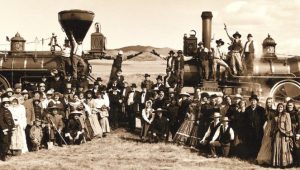
May 10, 1869: thanks to thousands of Chinese and Irish immigrants, who laid 2,000 miles of track, the nation’s first transcontinental railway line was finished by the joining of the Union Pacific and Central Pacific lines at Promontory Point, Utah. Officials and workers of the Union Pacific and the Central Pacific railways held a ceremony on Promontory Summit, in Utah Territory—approximately thirty-five miles away from Promontory Point, the site where the rails were joined—to drive in the Golden Spike. The line connected the nation from coast to coast and reduced a journey of four months or more to just one week.. The New York Times coverage began with: The long-looked-for moment has arrived. The construction of the Pacific Railroad is un fait accompli. The inhabitants of the Atlantic seaboard and the dwellers on the Pacific slopes are henceforth emphatically one people. Your correspondent is writing on Promontory Summit amid the deafening shouts of the multitude, with the tick, tick, of the telegraph close to his ear. (LH, see Sept 6; TM, see July 29, 1870)
May 10 Peace Love Art Activism
Judicial Milestone
May 10, 1886: the US Supreme Court ruled in Santa Clara County v. Southern Pacific Railroad Company that corporations were “persons” within the terms of the Fourteenth Amendment, and therefore were due rights of equal protection under state law. (see May 23, 1938)
May 10 Peace Love Art Activism
Religion and Public Education
SEPARATION OF CHURCH AND STATE
May 10, 1925: John Thomas Scopes was given a preliminary hearing before three judges regarding the Scopes’s breaking Tennessee’s Butler Act forbidding the teaching of evolution. (see Scopes for expanded story)
May 10 Peace Love Art Activism
Vietnam
Ho Chi Minh
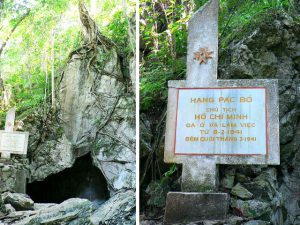
May 10, 1941: the Central Committee of the Communist Party of Vietnam, chaired by Ho Chi Minh, held its 8th Plenum in the Vietnamese village of Pac Bo. This was the first time that Ho had been in Vietnam since 1911 after living in England, France, the United States, the USSR, and China.
The Central Committee created the Viet Minh as a nationalist organization to gain independence from France and Japan. The Central Committee also concluded that the independence of Vietnam would be won only by armed rebellion which linked urban nationalism with rural rebellion. Armed forces were to be created in all areas of the country in which the Communist Party was active. (see July 14)
Peace talks
May 10, 1968: peace talks began in Paris. (see May 17)
Hill 937…Hamburger Hill
May 10, 1969: paratroopers from the 101st Airborne engaged a North Vietnamese regiment on the slopes of Hill 937, known to the Vietnamese as Ap Bia Mountain. Entrenched in prepared fighting positions, the North Vietnamese 29th Regiment repulsed the initial American assault. The battle will continue. (see May 14)
Cambodian Invasion
May 10, 1970: as part of the nationwide protests of the invasion of Cambodia a college student (Spence) hung an American flag upside down, with peace symbols attached. He was arrested and convicted under the State of Washington’s “improper use” clause of its flag statute law. (Vietnam, see May 14; CI & FS, see May 15; Spence, see June 25, 1974)
Pentagon Papers
May 10, 1973: it was revealed in court that in 1969 the F.B.I. secretly wire-tapped and taped phone conversations between Ellsberg and then Kissinger aide Morton Halperin, who had earlier supervised the study that became the Pentagon Papers. The government claims that all records of the wiretapping have been lost. (see Papers for expanded story)
May 10 Peace Love Art Activism
May 10 Music et al
Silver Beetles
May 10, 1960: the Silver Beetles auditioned for promoter Larry Parmes at the Blue Angel in Liverpool. Vying for the job of backing band for Billy Fury on an upcoming tour, the band was hampered by the fact their drummer, Tommy Moore, arrived late and the band had to use an unfamiliar drummer (Johnny Hutchinson from Cass & The Cassanovas, seen in photo). Parmes did not hire the band for the Fury tour, but took Moore’s absence into consideration and hired them to back Johnny Gentle on a tour of Scotland. (see May 14)
NYC Bans Folk Singing
May 10, 1961: five folk singers arrested in Washington Square Park April 9 when the first demonstration against the ban on folk singing there took place were cleared in Manhattan Arrest Court. (see Ban for expanded story)
May 10 Peace Love Art Activism
Consumer Protection
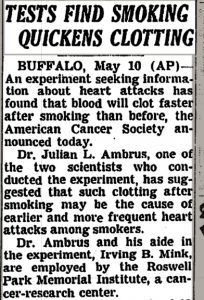
May 10, 1964: the American Cancer Society announced a new study that linked smoking to an increase in heart attack. The study showed that blood clotted faster after smoking.
In the experiment, each of 18 healthy medical students smoked a standard, non-filter cigarette for not more than five minutes, inhaling deeply. Afterwards, samples of their blood were tested to measure clotting in comparison with clotting that occurred in samples taken before the students smoked. The scientists reported that platelet stickiness in the blood was 84.4 per cent higher after smoking than before. (see June 24)
May 10 Peace Love Art Activism
Symbionese Liberation Army
May 10, 1977: Los Angeles Superior Court Judge E. Talbot Callister, stressing that she posed no threat to society, sentenced Patty Hearst to 5 years’ probation for her role in the Symbionese Liberation Army (SLA) crime spree May 16 – 17, 1974 (see SLA for expanded story)
May 10 Peace Love Art Activism
Jack Kevorkian
May 10, 1994: the Michigan Court of Appeals struck down the state’s ban on assisted suicide on the grounds it was enacted unlawfully. (see Kevorkian for expanded story)
May 10 Peace Love Art Activism
Oklahoma City Explosion
May 10, 1995: Terry Nichols charged in the Oklahoma City bombing. (see Aug 10)
May 10 Peace Love Art Activism
LSD
May 10, 2021: Dr. Rick Doblin’s quest to win mainstream acceptance of psychedelics took a significant leap forward when the journal Nature Medicine is published the results of his lab’s study on MDMA, the club drug popularly known as Ecstasy and Molly. The study, the first Phase 3 clinical trial conducted with psychedelic-assisted therapy, found that MDMA paired with counseling brought marked relief to patients with severe post-traumatic stress disorder.
The results, coming weeks after a New England Journal of Medicine study that highlighted the benefits of treating depression with psilocybin, the psychoactive ingredient in magic mushrooms, excited scientists, psychotherapists and entrepreneurs in the rapidly expanding field of psychedelic medicine. They said it is only a matter of time before the Food and Drug Administration grants approval for psychoactive compounds to be used therapeutically — for MDMA as soon as 2023, followed by psilocybin a year or two later. (next LSD, see Nov 2)
May 10 Peace Love Art Activism
LGBTQ
May 10, 2021: President Biden administration announced that health care providers cannot discriminate against transgender individuals. It was the latest step in President Biden’s efforts to restore civil rights protections for L.G.B.T.Q. people that President Trump had eliminated.
Under the new policy, the Department of Health and Human Services would once again prohibit discrimination on the basis of sexual orientation and gender identity by health care organizations that receive federal funding.
The move reversed a policy adopted by H.H.S. under President Trump which said that anti-discrimination provisions of the Affordable Care Act of 2010 did not apply to transgender people. That move had been hailed by social conservatives and harshly criticized by gay rights supporters. [NYT article] (next LGBTQ, see June 16)
May 10 Peace Love Art Activism
May 10 Peace Love Art Activism, May 10 Peace Love Art Activism, May 10 Peace Love Art Activism, May 10 Peace Love Art Activism, May 10 Peace Love Art Activism, May 10 Peace Love Art Activism, May 10 Peace Love Art Activism, May 10 Peace Love Art Activism, May 10 Peace Love Art Activism, May 10 Peace Love Art Activism, May 10 Peace Love Art Activism, May 10 Peace Love Art Activism,
